~ Sintra National Palace, 10.08.2023 ~
There's a museum inside the building too, holding various interesting artifacts from across the centuries. Well worth a guided tour!
The centrepiece of the old town of Sintra is the old monarchy's summer palace, originally dating back to the middle ages and continuously inhabited and expanded until the early 20th century.
The palace's gardens are broken up into various terraces and courtyards and wrap all around the western side of the building complex. Connected by narrow passages and staircases, they offer plenty of shade and great views of the town and sometimes even of the ocean.
The inside of the palace today hosts a museum. The raw architecture has been well-restored and maintained, however little of the sparse furniture is original – most was sourced elsewhere, and is simply representative of what would have stood here once.
The route through the palace is a successions of rooms and periods, from Moorish and medieval over Renaissance to Rococo.
One gallery had ships painted on the ceiling.
The temperature inside was pleasant. When you stepped outside onto a balcony and into the sun it was quite hot, but one step inside and it was cool and comfortable.
The most impressive room is the heraldic hall. The wall is covered in blue-white riles depicting playful scenes of aristocratic life; and above, a magnificent gilded dome-vault bearing the arms and names of various noble families, and finally the coat of arms of the Kingdom of Portugal at the apex.
The palace's kitchen is very spacious, and perhaps the most visually striking feature on the exterior on the castle – the two large cones on the roof are actually the kitchen's chimneys!
Nearby was a rococo apartment, featuring a contemporary toilet.
Some rooms are fully furnished to well convey what they were used for. Those that aren't at least feature descriptions (in Portugese and English) of their purpose and of the furniture that would have be there.
Well worth a visit.


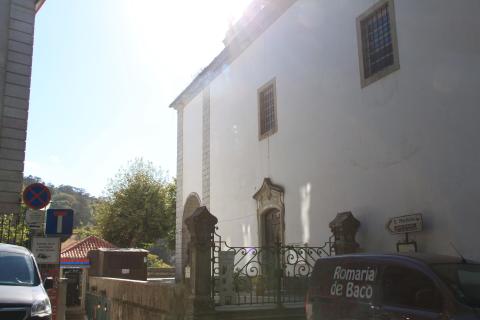
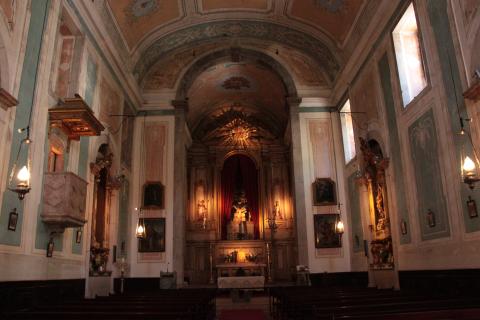
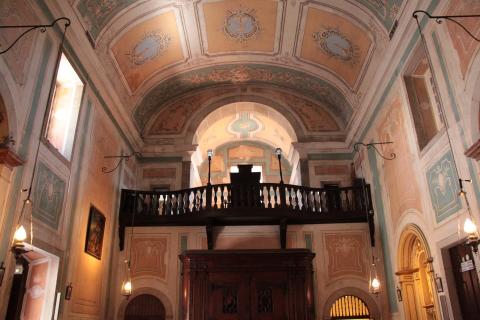
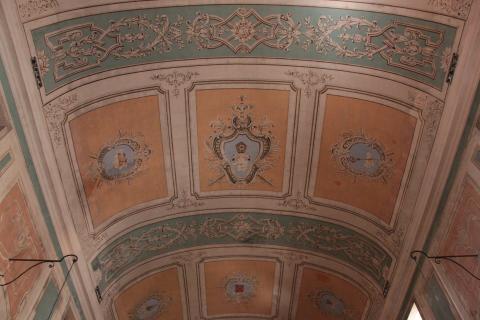
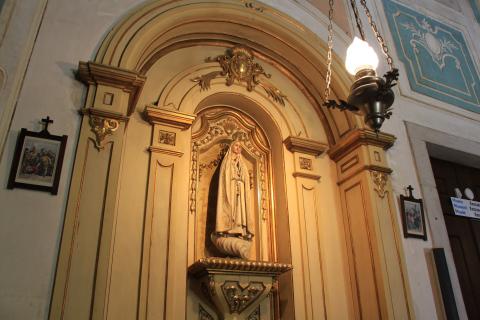
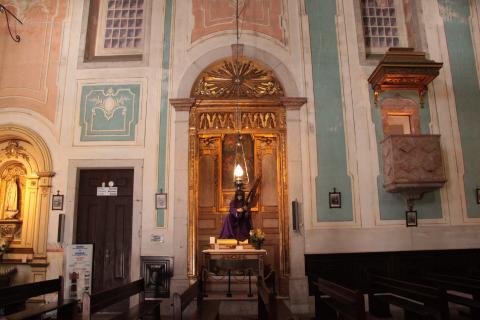
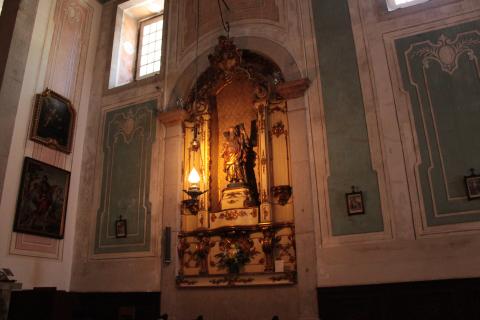
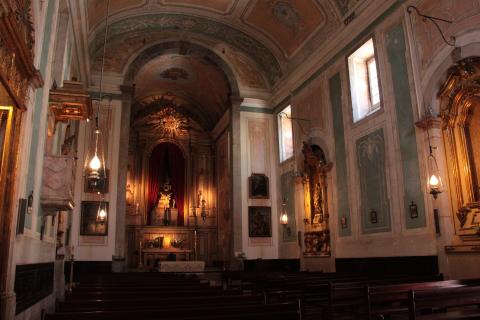

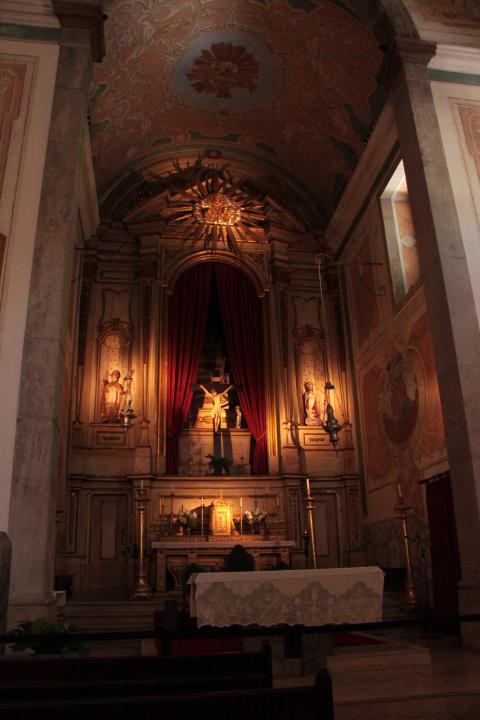
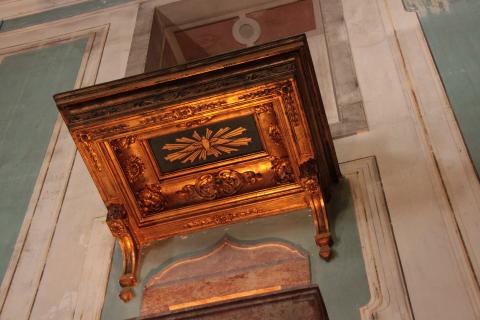


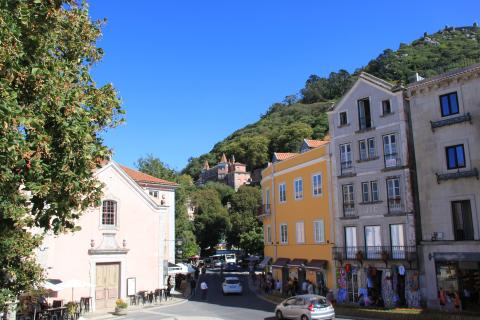

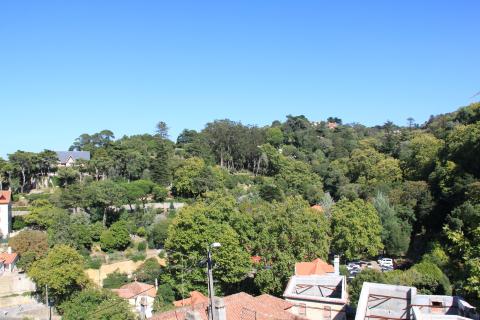


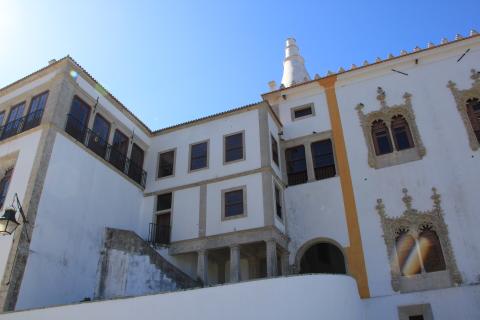

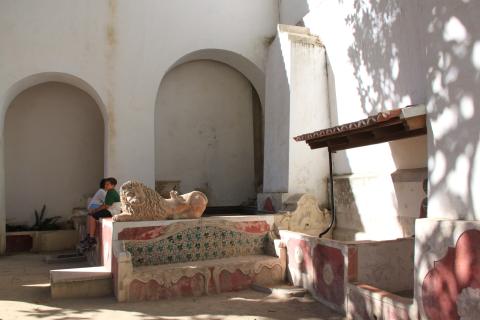
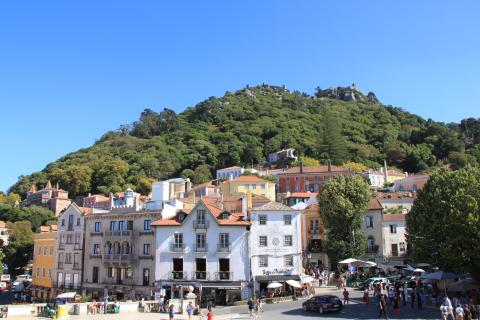

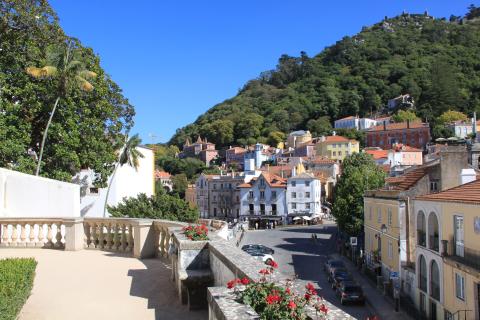
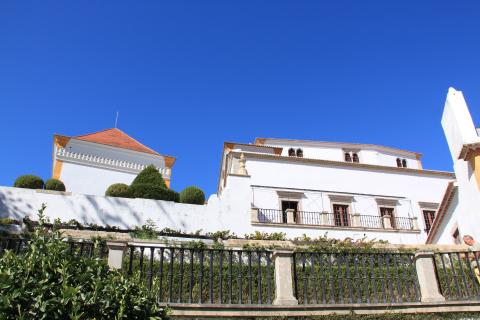
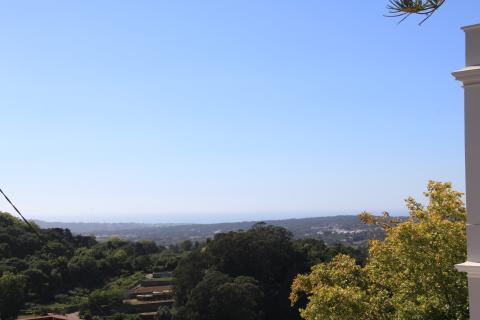

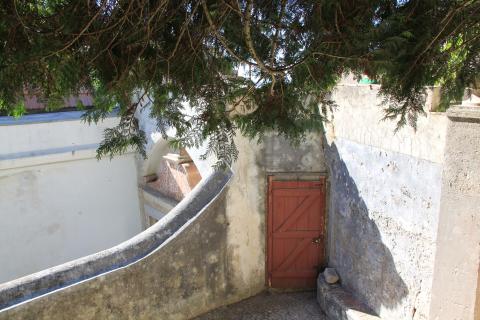
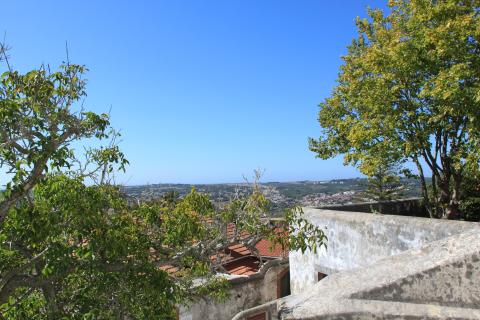



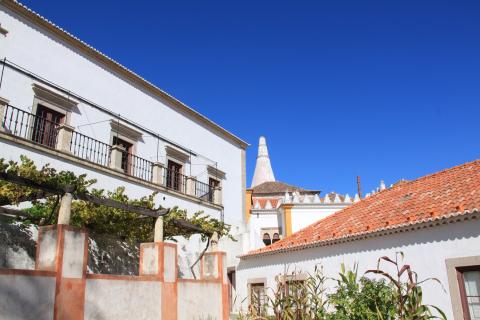

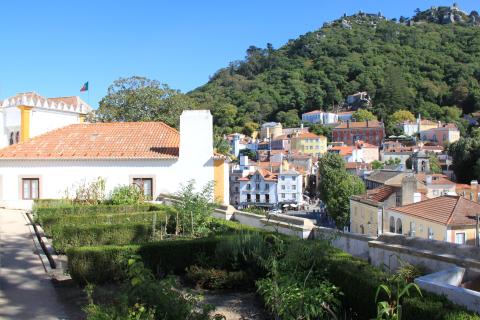


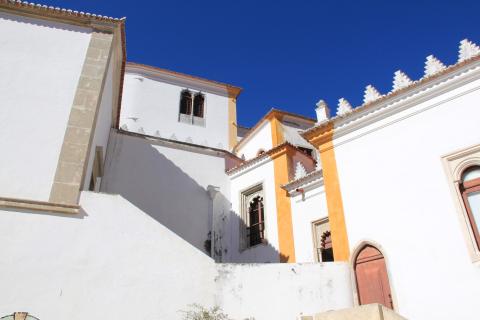
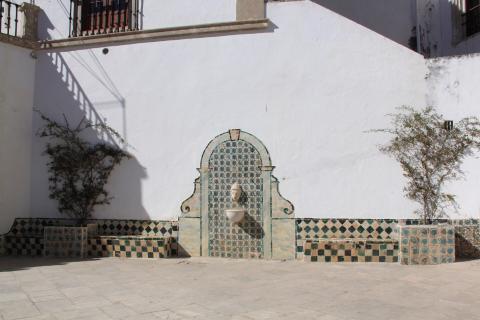

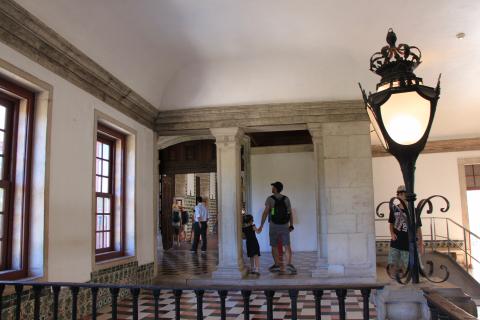

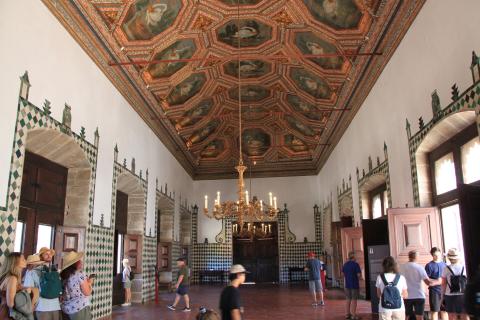
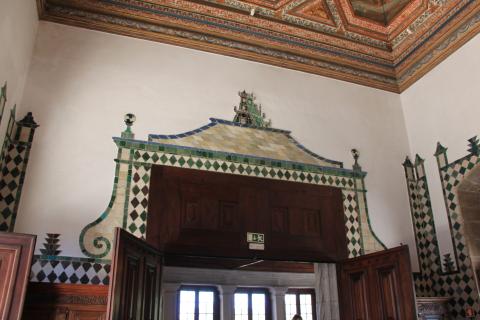
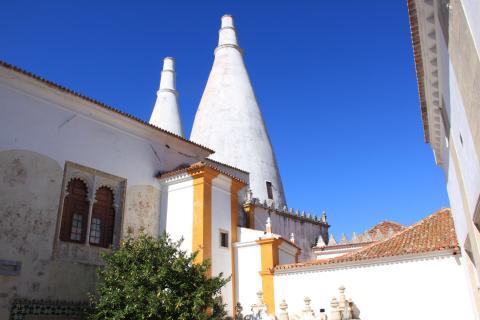
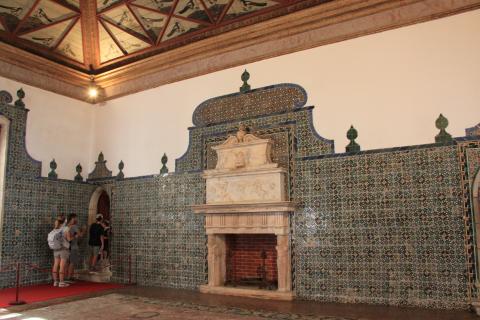
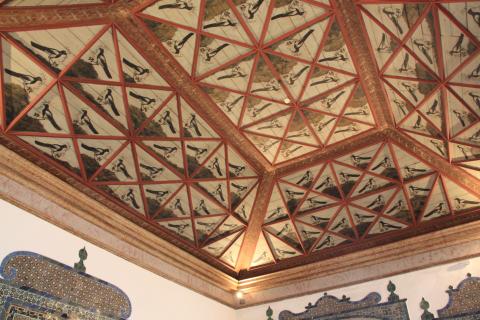
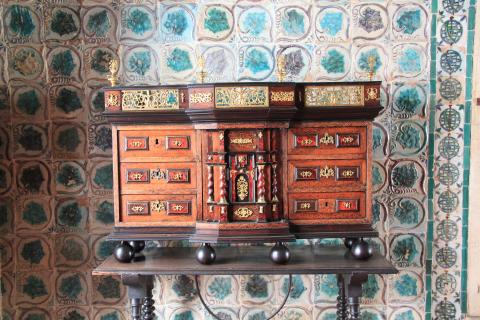
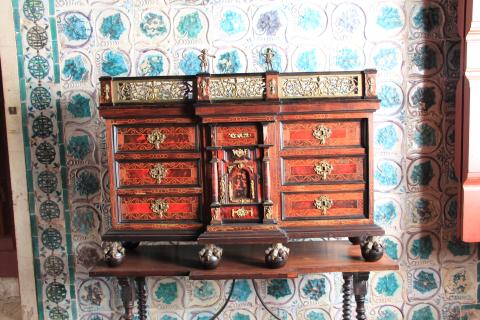

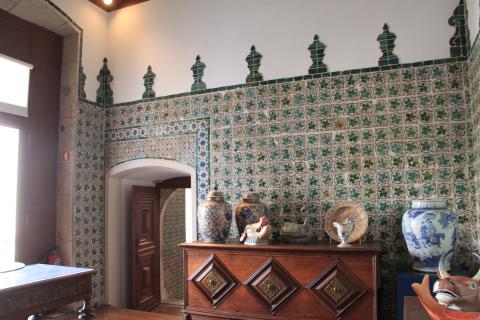
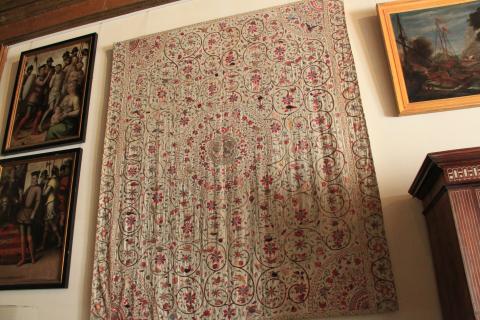
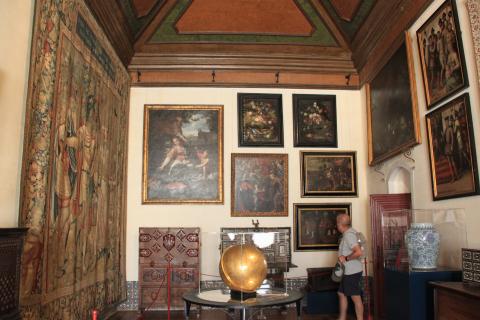
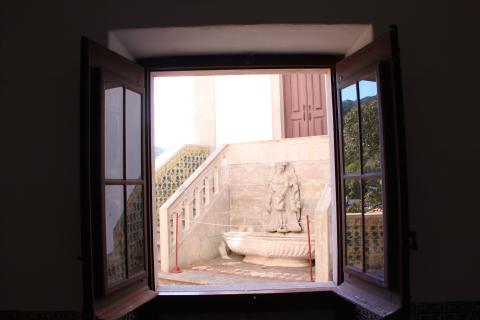
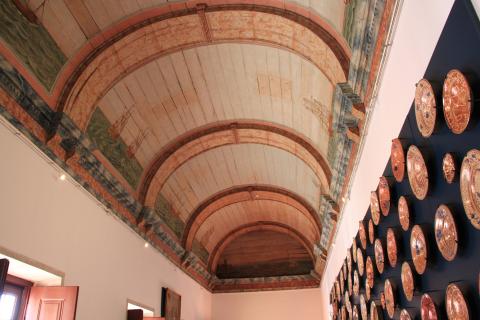
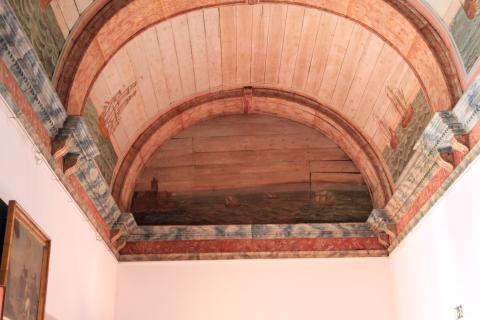






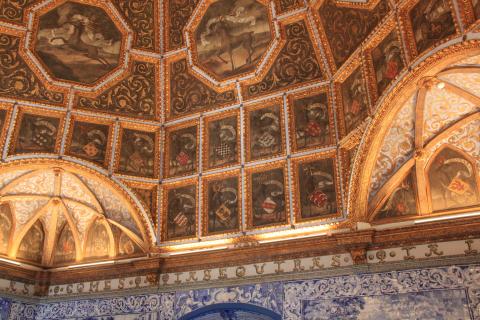

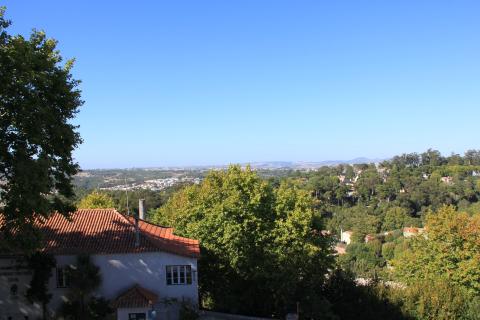

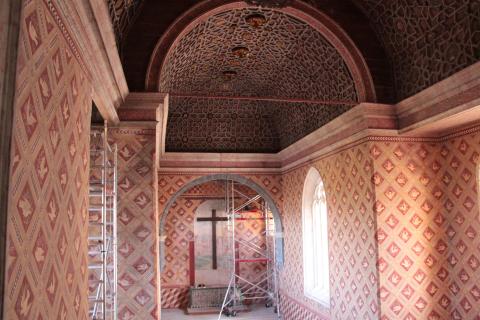
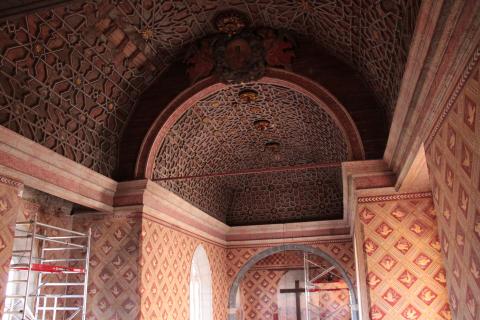

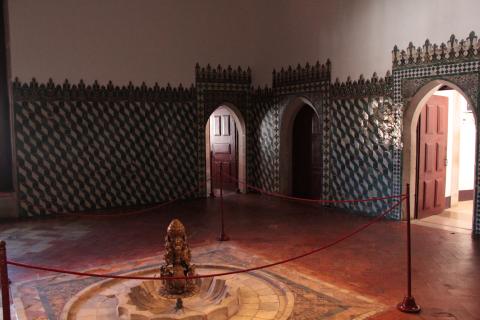

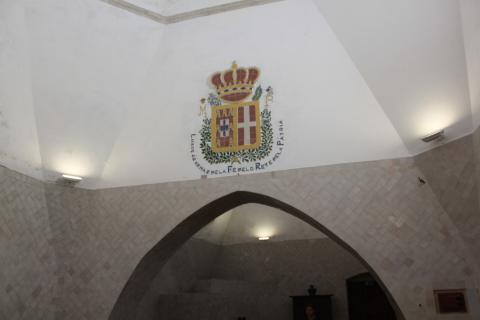
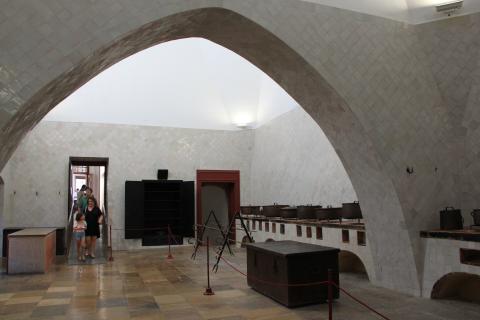

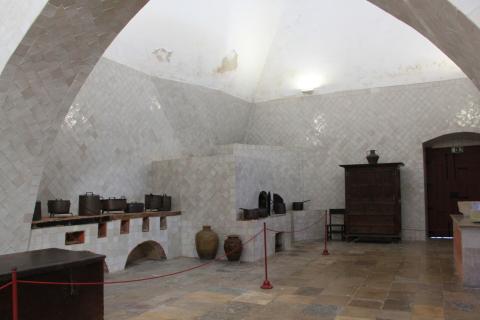
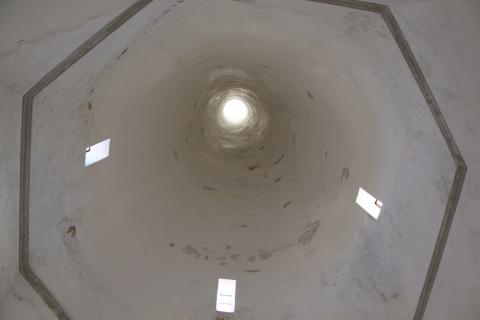


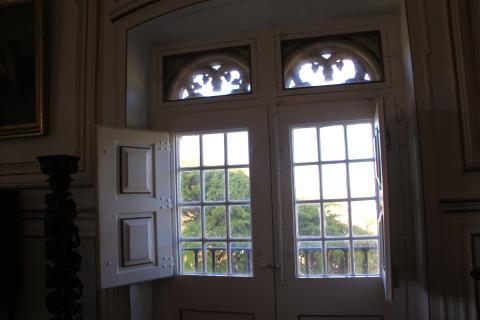
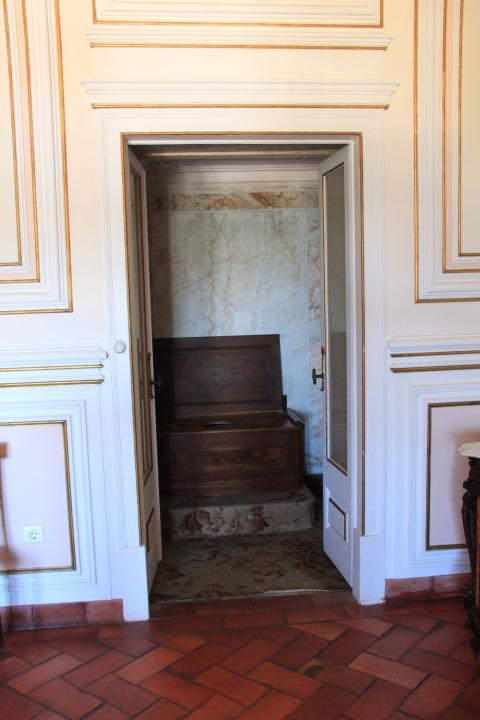
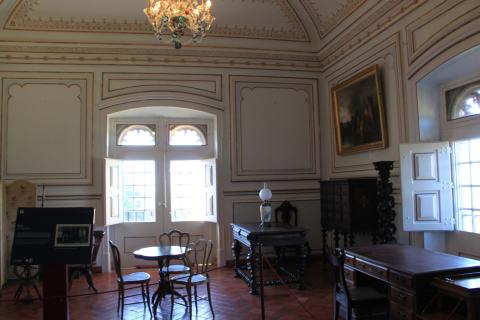
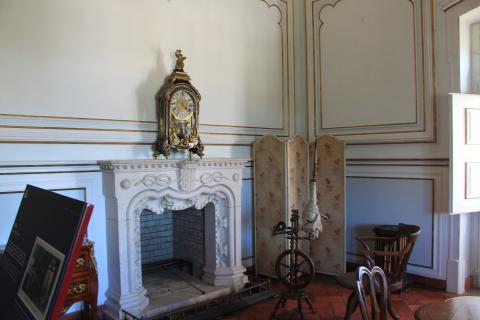


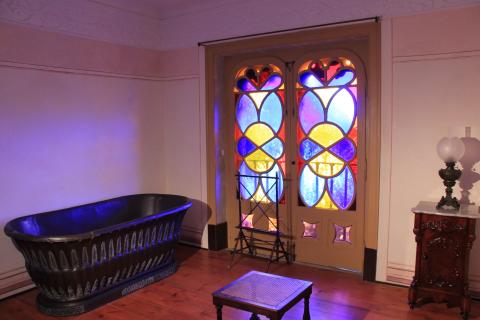

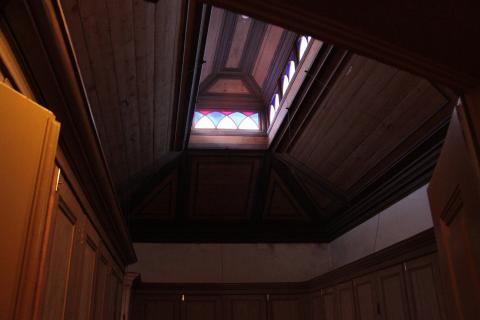
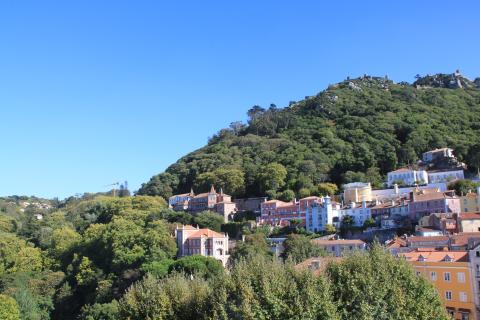

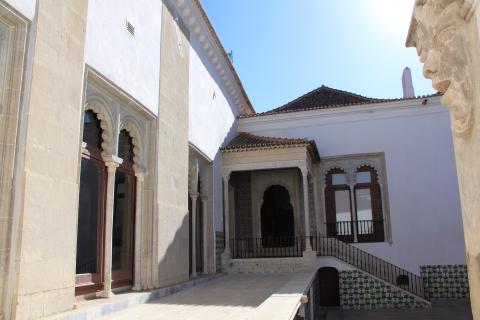
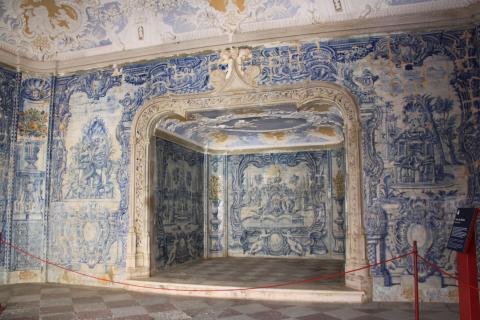

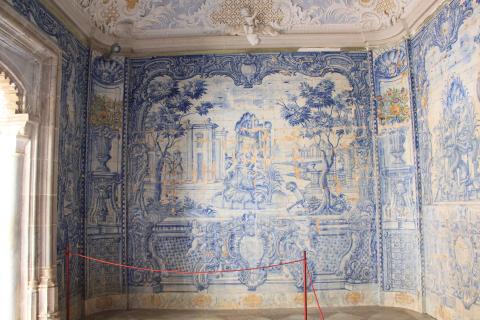

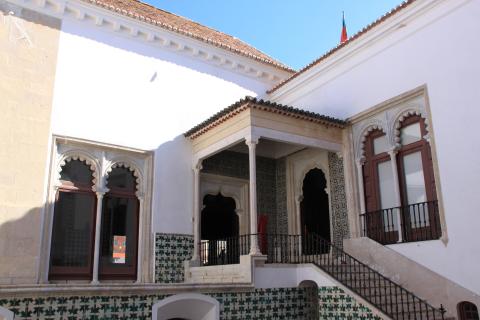
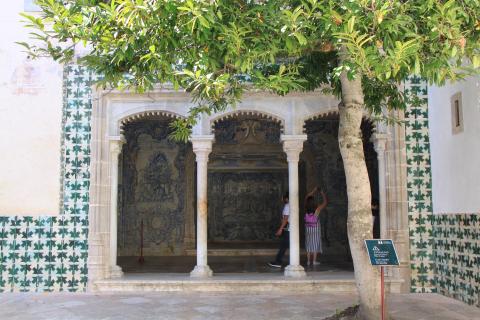
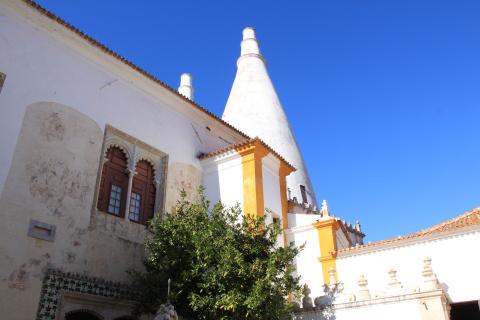

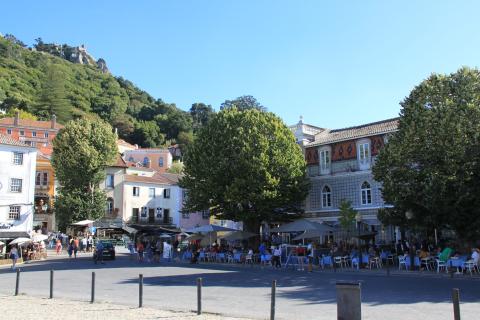
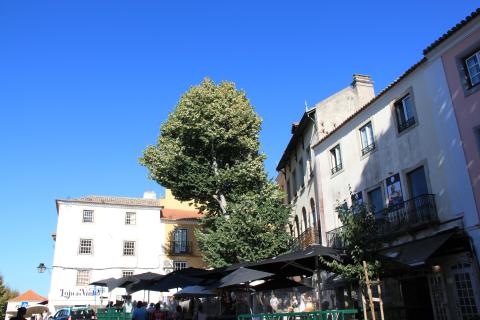

Sintra's parish church, named after St. Martin of Tours, was almost completely destoryed during the 1755 Lissabon earthquake. As a result, today's structure is uniformly Rococo, as it was all rebuilt in the years after.